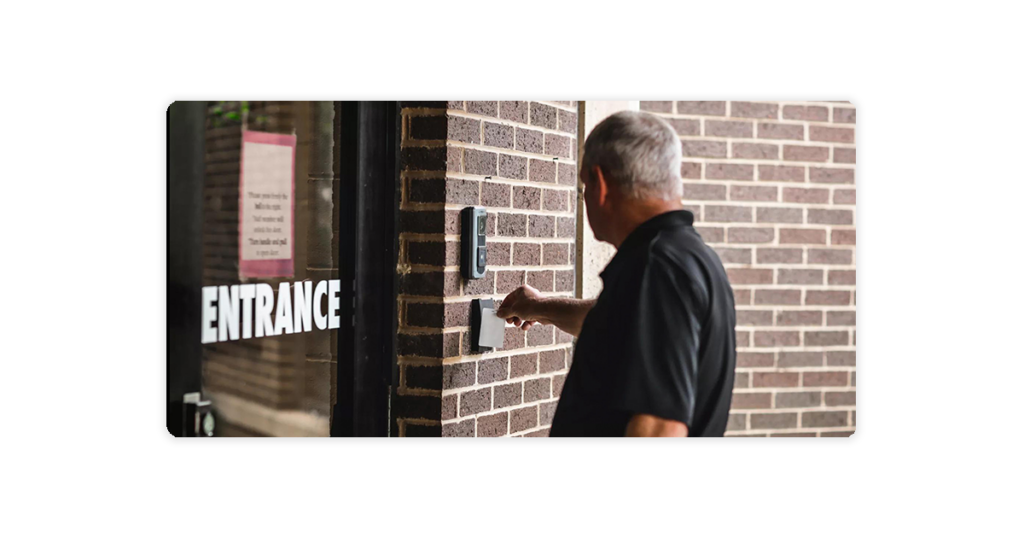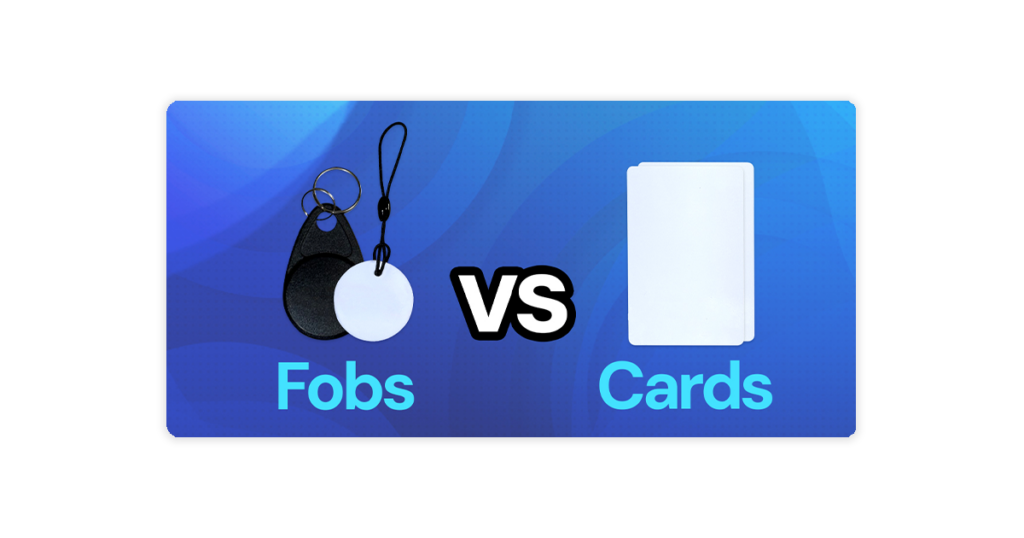Today’s access control solutions are sleek, portable, and secure, which means choosing the right credential is crucial to securely managing access to buildings, facilities, and secure areas. Two popular options are key fobs and key cards, each offering unique benefits and suited for different environments.
This blog post will explore the features, applications, and comparisons of key fobs and key cards to help you decide which solution is best for your needs.

Key Fobs: Compact and Convenient Access Control
Key fobs are small, lightweight devices, typically about the size of a car key that provide convenient access control making them easy to carry around. This makes them incredibly easy to carry around, whether attached to a keychain, clipped onto a lanyard, or tucked into a bag. No more rummaging through pockets or purses for the right key – your access control credential is always readily available.
Types of Key Fobs for Different Needs
Regular Key Fobs with Metal Rings
These classic key fobs provide a simple and cost-effective solution. They often feature a built-in metal ring, allowing them to be easily attached to keychains, lanyards, or bags.
Epoxy Key Fobs
For environments requiring extra durability, epoxy key fobs offer a tough outer shell coating with a nylon string for attachment. This combination is ideal for users who might encounter harsher conditions, providing a robust and flexible solution for users.

Key Cards: A Versatile Option for Access Management
While key fobs excel in portability, key cards offer distinct advantages. Key cards come in various sizes and formats, making them adaptable to different functionalities. The standard credit card size is the most common, allowing for easy integration with wallets and badge holders.
Applications in Different Environments
Office Buildings
In office buildings, key cards are often used as badges, integrating with employee identification systems. Key cards often double as employee badges, integrating with access control systems and identification software.
Educational Institutions
Educational institutions use key cards for access control, student identification, and facility management. Students and faculty can utilize key cards for access control, identification on campus, and even library services.

Comparing Key Fobs and Key Cards
Deciding between key fobs and key cards depends on your specific needs. Here’s a breakdown to help you choose:
Durability and Longevity
Key fobs are generally more durable than key cards due to their compact design and robust materials. They’re less susceptible to bending, breaking, or damage from everyday wear and tear.
Convenience and Portability
Key fobs reign supreme in portability. Their small size allows them to be easily attached to keychains, lanyards, or even bags, ensuring they’re always at hand. Key cards, being larger, are typically carried in wallets or badge holders, making them slightly less convenient for quick access.
Cost and Implementation: Both solutions have similar costs, but the ideal choice might hinge on your environment’s specific needs. In situations where user identification is crucial, key cards might be preferred for their integration with existing systems.
Takeaway: Choosing the Right Solution
Evaluate your requirements
Evaluate the specific needs of your environment to determine whether key fobs or key cards are more suitable. Consider factors such as durability, convenience, and integration with existing systems.
Make an informed decision
Both key fobs and key cards offer unique advantages. Key fobs excel in portability and durability, making them ideal for dynamic environments. Key cards offer versatility and can be integrated with identification systems, perfect for settings requiring multi-purpose functionality.
By carefully considering these factors, you can choose the ideal access control solution for your environment, ensuring a streamlined and secure experience for everyone.

